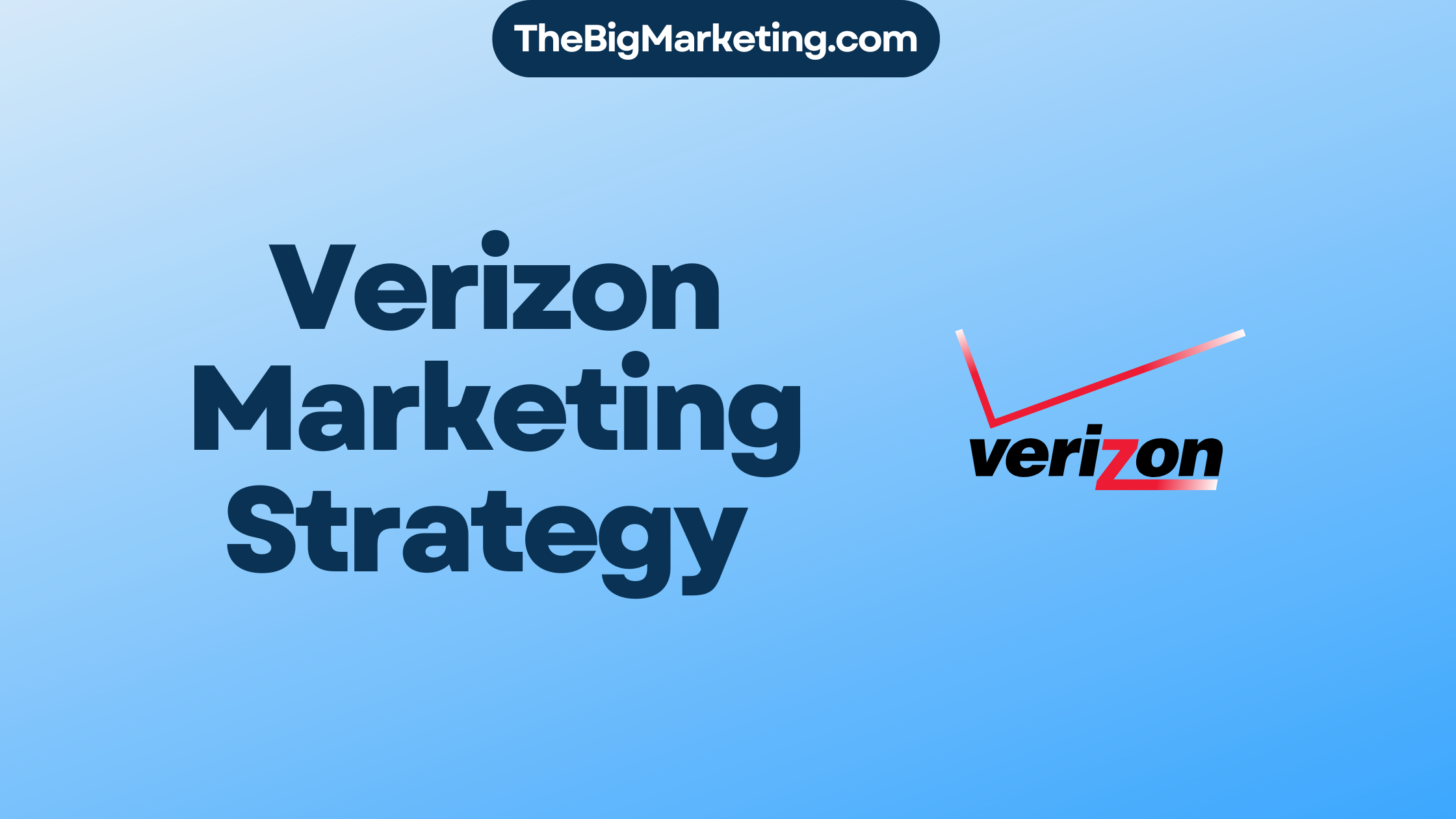Understanding the difference between business strategy and marketing strategy is crucial for organizations looking to achieve their goals and drive business success. Business strategy refers to the long-term plan of action that an organization uses to achieve its objectives and create a sustainable competitive advantage in the marketplace. On the other hand, marketing strategy focuses on the specific marketing activities and tactics that a business will use to promote its products or services. While business strategy is broader and encompasses all aspects of a business, marketing strategy has a narrower focus on the marketing activities. Business strategy is measured by overall business performance metrics such as revenue and market share, while marketing strategy is measured by marketing-specific metrics like customer acquisition and retention. Business strategy and marketing strategy are intrinsically linked, and both are essential for success in today’s competitive business environment.
When it comes to business growth strategies, strategic management plays a crucial role in ensuring long-term success. Digital marketing strategy is a key element of strategic management, helping organizations in competitive differentiation, market positioning, branding strategies, and market segmentation. By crafting a comprehensive marketing strategy based on market research insights, businesses can effectively plan and execute their marketing campaigns, enabling them to reach their target audience and drive business growth.
Key Takeaways:
- Corporate strategy focuses on the overall plan of action to achieve business objectives and create a competitive advantage, while marketing strategy focuses on the specific marketing activities.
- Business strategy is measured by overall business performance metrics, while marketing strategy is measured by marketing-specific metrics.
- Strategic management involves crafting a digital marketing strategy to achieve competitive differentiation, market positioning, branding strategies, and market segmentation.
- Market research insights play a vital role in informing marketing strategy and planning.
- Corporate strategy and marketing strategy are interconnected and essential for business success.
What is Business Strategy?
Business strategy is the foundation of a company’s long-term plan, guiding its goals and objectives. It involves creating a sustainable competitive advantage by differentiating the organization from its competitors in the marketplace. A successful business strategy takes into account market trends, customer needs, and the strengths and weaknesses of the organization.
Business strategy sets the overall vision and direction for the organization, outlining the goals and objectives it aims to achieve. It provides a roadmap for how the organization will utilize its resources and capabilities to gain a competitive edge and achieve long-term success.
A key aspect of business strategy is marketplace differentiation. This involves identifying ways to stand out from competitors and offering unique value to customers. By understanding market trends and customer needs, businesses can tailor their products or services to meet specific demands and gain a competitive advantage.
Strengths and weaknesses play a crucial role in business strategy. By identifying and leveraging the organization’s strengths, it can capitalize on areas where it excels and outperform competitors. Similarly, understanding weaknesses allows the organization to address any vulnerabilities and improve overall performance.
Overall, business strategy is a comprehensive and forward-thinking approach that drives the long-term success of an organization. It considers market dynamics, customer needs, and the organization’s internal capabilities to create a roadmap for sustained growth and competitive advantage.
What is Marketing Strategy?
Marketing strategy is a vital component of the overall business strategy. It focuses on the specific marketing activities that an organization will undertake to promote its products or services. A well-defined marketing strategy not only helps businesses reach their target audience effectively, but also establishes a strong value proposition that sets them apart from competitors.
The key elements of a marketing strategy include:
- Target Audience: Identifying and understanding the specific group of consumers or businesses that the organization aims to reach.
- Value Proposition: Defining the unique value that the products or services offer to the target audience, highlighting the benefits and advantages.
- Marketing Mix: Determining the optimal combination of product, price, promotion, and place (distribution) to meet the needs and preferences of the target audience.
- Messaging: Crafting compelling and persuasive messages that effectively communicate the value proposition and resonate with the target audience.
- Communication Channels: Selecting the appropriate channels, such as digital platforms, traditional media, or direct marketing, to connect with the target audience and deliver the messages.
Importance of Marketing Strategy
A well-developed marketing strategy helps businesses achieve their marketing objectives while maximizing their return on investment. It ensures that resources are allocated efficiently and effectively to reach the intended audience and generate desired outcomes. A strategic approach to marketing enables businesses to position their products or services effectively, create brand awareness, drive customer engagement, and ultimately increase sales and revenue.
Furthermore, a well-executed marketing strategy enables businesses to differentiate themselves from competitors and build a strong market presence. It guides decision-making and resource allocation, helping businesses optimize their marketing efforts and achieve sustainable growth.
| Benefits of a Strong Marketing Strategy |
|---|
| 1. Increased market share |
| 2. Enhanced brand reputation and recognition |
| 3. Better understanding of customer needs and preferences |
| 4. Improved customer engagement and loyalty |
| 5. Higher conversion rates and sales |
| 6. Improved return on marketing investment |
| 7. Efficient utilization of marketing resources |
Differences between Business Strategy and Marketing Strategy
In the world of business, both business strategy and marketing strategy play vital roles in achieving organizational goals and objectives. While they are interconnected, it is important to understand the differences between the two.
Scope
Business strategy encompasses all aspects of a business, including operations, finance, human resources, and marketing. It provides a comprehensive roadmap for the organization’s long-term success. On the other hand, marketing strategy focuses solely on the marketing activities that support the overall business strategy. It defines how the organization will reach its target audience and promote its products or services.
Timeframe
Business strategy is formulated as a long-term plan that spans several years. It sets the direction for the organization’s growth and sustainability. In contrast, marketing strategy is a shorter-term plan that is reviewed and updated more frequently. It adapts to market trends and consumer preferences, allowing the organization to stay relevant and competitive.
Focus
Business strategy focuses on the overall goals and objectives of the organization. It involves decisions related to market positioning, competitive differentiation, and resource allocation. Marketing strategy, on the other hand, hones in on the specific marketing activities that will help achieve those goals. It defines the target audience, value proposition, and communication channels to effectively reach and engage customers.
Metrics
Business strategy is measured by overall business performance metrics, such as revenue, market share, and profitability. It provides a holistic view of the organization’s success. In contrast, marketing strategy is measured by marketing-specific metrics, such as customer acquisition, conversion rates, and customer satisfaction. These metrics assess the effectiveness of marketing efforts and the impact on attracting and retaining customers.
Integration
Business strategy is integrated into all aspects of a business, ensuring alignment and coordination between different functions and departments. It considers the interdependencies between operations, finance, human resources, and marketing. Marketing strategy, although a subset of the overall business strategy, is integrated into the broader business strategy. It aligns marketing activities with the organization’s goals and objectives, leveraging marketing as a strategic driver for growth.
Understanding the differences between business strategy and marketing strategy is essential for organizations to develop effective plans and achieve success in today’s competitive landscape.
The Roles of Business Strategy and Marketing Strategy
The success of any organization relies on the effective implementation of both business strategy and marketing strategy. Understanding the roles and responsibilities of each is crucial for driving growth and achieving business goals.
In most organizations, business strategy is led by the top management or the board of directors. They are responsible for setting the overall vision, goals, and objectives of the organization and making strategic decisions that will drive its success. This role requires strategic thinking, leadership, and decision-making skills to effectively navigate the dynamic business landscape.
On the other hand, marketing strategy is typically led by the marketing department or the Chief Marketing Officer (CMO). Their primary focus is on shaping the marketing activities that will contribute to the achievement of the organization’s goals. This role requires analytical, creative, and communication skills to develop targeted campaigns, identify market opportunities, and establish a strong brand presence.
The Collaboration between Business Strategy and Marketing Strategy
While business strategy and marketing strategy have distinct roles, they must collaborate and coordinate with each other and with other functions and stakeholders within the organization. This collaboration ensures alignment and integration, maximizing the impact of both strategies.
Business strategy provides the foundation and framework for the organization’s overall direction, determining its market positioning, competitive differentiation, and long-term goals. It guides decision-making at the highest level, keeping a holistic view of the business in focus.
Marketing strategy, on the other hand, takes the business strategy as a guiding principle and translates it into actionable marketing activities. It identifies the target audience, develops a compelling value proposition, and defines the marketing mix and communication channels to reach and engage customers effectively.
By working together, business strategy and marketing strategy ensure that every marketing initiative aligns with the organization’s long-term goals, delivers a consistent brand message, and contributes to its growth and profitability.
Roles and Skills of Business Strategy and Marketing Strategy
| Roles | Business Strategy | Marketing Strategy |
|---|---|---|
| Leadership | ✓ | |
| Strategic Thinking | ✓ | |
| Decision-Making | ✓ | |
| Analytics | ✓ | |
| Creative | ✓ | |
| Communication | ✓ |
By recognizing the distinct roles of business strategy and marketing strategy and fostering collaboration between these functions, organizations can effectively leverage strategic thinking, analytical skills, and creative marketing techniques to drive growth and achieve their business objectives.
The Benefits of Distinguishing Business Strategy and Marketing Strategy
Distinguishing business strategy from marketing strategy offers several benefits. By clarifying the difference, organizations can avoid confusion, duplication, or contradiction in their plans and actions. This clear distinction allows businesses to align their efforts effectively and efficiently, maximizing the resources allocated to each strategy.
One of the key benefits is the ability to enhance competitive advantage. When businesses understand the unique roles and goals of business strategy and marketing strategy, they can develop targeted approaches to differentiate themselves in the market. By leveraging their strengths and addressing customer needs effectively, companies can position themselves as leaders and stand out from the competition.
The benefits of distinguishing business strategy and marketing strategy also extend to goal achievement. By clearly defining the strategies and tactics related to each, businesses can develop focused plans that are aligned with their overarching objectives. This alignment ensures that all efforts are working towards the same end goals, enhancing the likelihood of success.
By integrating both strategies, organizations can create synergy, innovation, and learning. When business strategy and marketing strategy work together seamlessly, the combined power drives business success. Integrating these strategies allows for increased collaboration, facilitating the exchange of ideas and insights. This collaboration fosters innovation and encourages the development of creative solutions to achieve business goals effectively.
Ultimately, distinguishing and integrating business strategy and marketing strategy is a recipe for enhanced business performance. By developing a solid business strategy and aligning it with a well-defined marketing strategy, organizations can streamline their operations, optimize resource allocation, and drive sustainable growth. It is the pathway to unlocking the full potential of a business and achieving long-term success.
| Benefits of Distinguishing Business Strategy and Marketing Strategy |
|---|
| Avoid confusion, duplication, or contradiction in plans and actions |
| Enhance competitive advantage and differentiation |
| Achieve goals effectively and efficiently |
| Promote collaboration, synergy, and innovation |
| Streamline operations and resource allocation |
| Drive sustainable growth and business performance |
Strategy vs. Tactic
Understanding the distinction between strategy and tactic is essential for effective planning and execution. While the terms are often used interchangeably, they have distinct characteristics that differentiate them.
Strategy is a high-level plan that sets the direction and long-term goals of an organization. It provides the overall vision and framework for achieving success. A well-defined strategy identifies the scope, focus, and time frame for achieving specific objectives.
Tactic, on the other hand, refers to the specific actions and methods used to implement the strategy and achieve short-term objectives. Tactics are more detailed and focused; they are the practical steps taken to execute the strategic plan.
Here’s a breakdown of the key differences:
Scope
Strategy encompasses the broader picture, addressing the overall goals and long-term vision, while tactics are concerned with specific actions and the immediate steps to be taken.
Level of Detail
Strategy is a high-level plan that outlines the general approach, while tactics delve into the specifics, providing meticulous instructions for execution.
Time Frame
Strategy typically operates over an extended period, often several years. In contrast, tactics are implemented in the short term, focusing on achieving immediate goals.
Let’s illustrate this further with an example:
| Strategy | Tactic | |
|---|---|---|
| Objective | Increase market share by 15% in the next three years. | Launch targeted digital marketing campaigns to boost brand awareness and attract new customers. |
| Approach | Develop a comprehensive marketing plan that includes market research, competitor analysis, and the identification of key target audiences. | Create engaging content for social media platforms, optimize website for organic search, and implement paid advertising campaigns. |
| Measurement | Monitor quarterly revenue growth, market share, and customer satisfaction levels. | Analyze key performance indicators (KPIs) such as website traffic, click-through rates, and conversion rates. |
In this example, the strategy is to increase market share by 15% in the next three years. The tactics identified to achieve this include launching targeted digital marketing campaigns across social media platforms, optimizing the website for organic search, and implementing paid advertising campaigns.
Overall, strategy sets the course, providing a high-level plan, while tactics determine how to navigate and achieve specific objectives. Both are essential components of effective planning and execution, working together to drive success.
What is Digital Marketing Strategy?
A digital marketing strategy is a comprehensive plan designed to utilize various online channels to establish a strong internet presence and achieve specific marketing objectives. It involves leveraging organic search, social media, paid ads, and other digital mediums to boost a business’s visibility and attract new customers. By carefully selecting the right platforms and tactics, a strong digital marketing strategy helps businesses achieve their specific digital goals.
Online channels play a crucial role in digital marketing strategy, allowing businesses to reach their target audience effectively. These channels include:
- Organic search: Utilizing search engine optimization (SEO) techniques to improve website visibility and drive organic traffic.
- Social media: Engaging with customers and building brand awareness through various social media platforms like Facebook, Twitter, and Instagram.
- Paid ads: Running targeted advertisements on platforms like Google Ads, Facebook Ads, and LinkedIn Ads to reach a specific audience and drive conversions.

A successful digital marketing strategy begins with defining specific marketing objectives. These objectives may include increasing website traffic, generating leads, improving brand awareness, or driving sales. By aligning these objectives with the chosen online channels, businesses can effectively execute their strategies and achieve their goals.
Moreover, a well-crafted digital marketing strategy helps businesses establish a strong internet presence and stay ahead of the competition. By leveraging the power of digital mediums, businesses can reach a wider audience, engage with potential customers, and build lasting relationships. This enables them to expand their customer base, increase brand visibility, and ultimately drive business growth.
In summary, a digital marketing strategy is essential for any business looking to thrive in the digital age. By utilizing online channels and executing well-defined marketing objectives, businesses can establish a strong internet presence, attract new customers, and achieve their digital goals.
What is a Digital Marketing Campaign?
A digital marketing campaign is a set of actions and tactics within a digital marketing strategy that work towards achieving a specific end goal. These campaigns serve as the building blocks that move a business closer to its desired outcome. For instance, if the overarching objective of a digital marketing strategy is to generate more leads through social media, a digital marketing campaign may involve sharing high-performing content on various social media platforms to drive lead generation and increase brand visibility.
Digital marketing campaigns are carefully designed and executed to reach a specific target audience and encourage them to take desired actions. These campaigns often leverage various digital channels such as social media, email marketing, search engine optimization (SEO), and content marketing to engage and convert potential customers. By utilizing the right tactics and strategies, businesses can effectively communicate their value proposition, boost brand awareness, and achieve their specific end goals.
Successful digital marketing campaigns incorporate a combination of tactics, such as content creation, targeted advertising, influencer partnerships, and social media promotions. These campaigns can be measured and analyzed using key performance indicators (KPIs) such as click-through rates, conversion rates, and engagement metrics to evaluate their effectiveness and make data-driven optimizations.
Here’s a table comparing different elements of a digital marketing campaign:
| Element | Description |
|---|---|
| Goal | The specific end goal or objective the campaign aims to achieve. For example, lead generation, brand awareness, or product sales. |
| Tactics | The specific actions and strategies used to accomplish the campaign’s goal. This can include content creation, social media advertising, email marketing, and search engine optimization. |
| Channels | The digital platforms and channels utilized to reach and engage the target audience. This can include social media platforms, websites, email platforms, and search engines. |
| Content | The type of content created and shared as part of the campaign, such as blog posts, videos, infographics, or interactive content. |
| Measurement | The metrics and key performance indicators (KPIs) used to assess the success and impact of the campaign. This can include click-through rates, conversion rates, engagement metrics, and return on investment (ROI). |
By designing and implementing effective digital marketing campaigns, businesses can effectively reach their target audience, generate leads, drive brand awareness, and ultimately achieve their specific business objectives.
How to Create a Digital Marketing Strategy
Creating a digital marketing strategy involves several steps. By following these systematic steps, businesses can develop a cohesive and effective strategy to achieve their goals. Let’s dive into the process:
- Build Detailed Buyer Personas: To understand your target audience better, create detailed buyer personas. These personas provide insights into their demographics, preferences, needs, and pain points, enabling you to tailor your digital marketing efforts accordingly.
- Identify Your Goals: Clearly define your goals and objectives for your digital marketing strategy. Whether it’s increasing brand awareness, driving website traffic, generating leads, or increasing sales, having specific and measurable goals will guide your overall strategy.
- Select the Right Digital Marketing Tools: Identify the digital marketing tools that will help you achieve your goals effectively. This may include tools for social media management, email marketing, SEO, content creation, analytics, and more. Choose tools that align with your strategy and target audience.
- Evaluate Existing Digital Channels: Assess your existing digital channels, such as your website, social media profiles, email list, and blog. Categorize these channels into owned, earned, and paid media to determine where you need to focus your efforts and investments.
- Audit and Plan Your Media Campaigns: Conduct a thorough audit of your owned, earned, and paid media channels. Review the performance of each channel and identify areas for improvement. Based on your findings, refine your campaigns to ensure they align with your overall strategy.
- Create a Cohesive Strategy: Bring your individual digital marketing campaigns together to create a cohesive strategy. Ensure that each campaign supports your goals, target audience, and brand messaging. Develop a timeline, allocate resources, and set key performance indicators (KPIs) to measure your success.
By following these steps, businesses can create a well-rounded digital marketing strategy that resonates with their target audience, achieves their goals, and maximizes their online presence.
Here’s what else to consider
The digital marketing landscape is vast and constantly evolving, which can be overwhelming for businesses, especially those focused on growth. Developing an agile digital marketing strategy is essential to navigate this ever-changing landscape effectively.
When crafting your digital marketing strategy, it’s crucial to consider your business’s specific needs and resources. One size does not fit all in the digital world, so tailoring your approach to align with your unique circumstances is vital.
An agile digital marketing strategy allows businesses to adapt quickly to market trends and consumer behavior. By staying informed about the latest developments in the digital landscape, you can make informed decisions and take advantage of emerging opportunities.
Utilizing the right tools and techniques is another essential aspect of an effective digital marketing strategy. Conduct thorough research to identify the platforms, software, and resources that align with your business goals and target audience.
Flexibility is key in the digital marketing landscape. As new technologies and trends emerge, it’s important to adjust your strategy accordingly. By staying adaptable and open to change, you can stay ahead of the competition and continue to drive growth and success.
Benefits of Developing an Agile Digital Marketing Strategy:
- Adaptability to changing market trends and consumer behavior
- Integration of the latest digital marketing tools and techniques
- Enhanced targeting and personalization for improved customer experience
- Faster response to emerging opportunities and challenges
- Improved ROI through efficient resource allocation
By considering the unique demands of the digital marketing landscape, businesses can create and maintain an agile digital marketing strategy that drives growth and success. With the right approach, businesses can navigate the complexities of the digital world with confidence and achieve their marketing objectives.
| Digital Marketing Landscape | Challenges | Opportunities |
|---|---|---|
| Increased competition | – Keeping up with changing algorithms – Standing out in a saturated market |
– Access to a global audience – Enhanced targeting capabilities |
| Technological advancements | – Learning and implementing new tools – Adapting to evolving consumer behavior |
– Innovative ways to reach and engage with customers – Automation and efficiency improvements |
| Shift to mobile | – Mobile optimization challenges – Changing user preferences |
– Access to a larger customer base – Mobile-specific advertising opportunities |
| Rise of social media | – Managing multiple social media platforms – Ensuring consistent brand messaging |
– Enhanced brand visibility and reach – Direct communication with customers |
Conclusion
Corporate strategy and marketing strategy are two crucial components of overall business planning. While corporate strategy focuses on setting the long-term vision and goals of an organization, marketing strategy concentrates on the specific marketing activities that will help achieve those objectives. Both strategies, although distinct, are interconnected and essential for business success.
Organizations must ensure alignment and integration between their corporate strategy and marketing strategy to effectively drive growth and achieve their goals. By distinguishing and understanding the unique roles of each strategy, businesses can unlock effective growth tactics and maximize their competitive advantage in today’s fast-paced marketplace.
In summary, the corporate strategy provides the foundation for the organization’s long-term success, while the marketing strategy outlines the specific activities that will promote products or services and reach target audiences. By integrating these strategies harmoniously, businesses can create a cohesive and comprehensive approach that drives success, enhances brand positioning, and achieves sustainable growth.
FAQ
What is the difference between business strategy and marketing strategy?
Business strategy refers to the long-term plan of action that an organization uses to achieve its objectives and create a sustainable competitive advantage. Marketing strategy focuses on the specific marketing activities and tactics that a business will use to promote its products or services.
How are business strategy and marketing strategy measured?
Business strategy is measured by overall business performance metrics such as revenue and market share, while marketing strategy is measured by marketing-specific metrics like customer acquisition and retention.
Who leads the development of business strategy and marketing strategy?
Business strategy is typically led by top management or the board of directors, while marketing strategy is led by the marketing department or the chief marketing officer.
How do business strategy and marketing strategy differ in terms of scope and focus?
Business strategy is broader and encompasses all aspects of a business, while marketing strategy has a narrower focus on marketing activities.
What are the benefits of distinguishing business strategy from marketing strategy?
Distinguishing business strategy from marketing strategy helps organizations avoid confusion, enhance their competitive advantage, and achieve goals effectively.
What is the difference between strategy and tactic?
Strategy is a high-level plan that guides the direction and long-term goals, while tactics are specific actions and methods used to implement the strategy and achieve short-term objectives.
What is a digital marketing strategy?
A digital marketing strategy is a plan for using online channels to establish an internet presence and achieve specific marketing objectives, such as boosting visibility and attracting new customers.
What is a digital marketing campaign?
A digital marketing campaign is a set of actions and tactics within a digital marketing strategy that work towards achieving a specific end goal, such as generating more leads through social media.
How do you create a digital marketing strategy?
To create a digital marketing strategy, you need to build buyer personas, identify goals, select digital marketing tools, evaluate existing digital channels, and plan owned, earned, and paid media campaigns that align with your strategy.
What should businesses consider in the digital marketing landscape?
Businesses should consider their specific needs and resources and stay adaptable in the ever-changing digital landscape to create and maintain an effective digital marketing strategy.
What are the roles of business strategy and marketing strategy?
Business strategy requires strategic thinking and leadership, while marketing strategy requires analytics, creativity, and communication skills.
Can business strategy and marketing strategy be integrated?
Yes, business strategy and marketing strategy should collaborate and coordinate with each other, as well as with other functions and stakeholders, to achieve business goals and drive success.







